
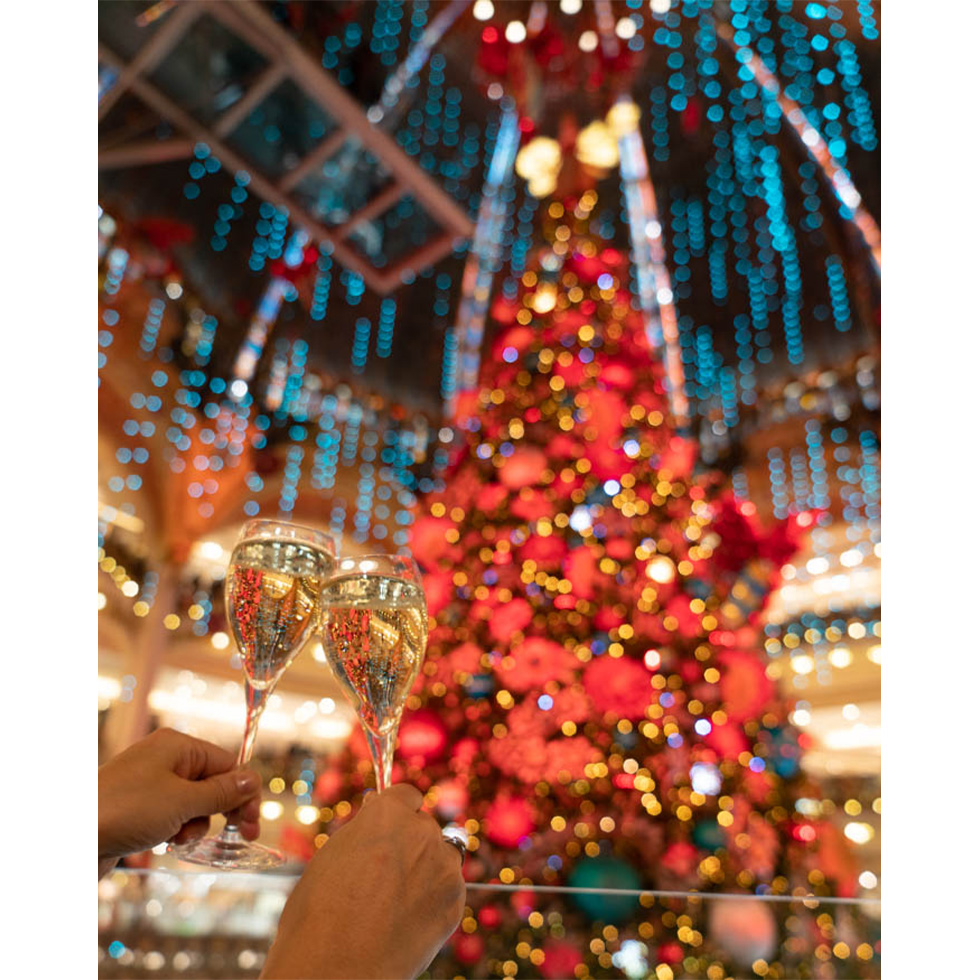
Christmas is the most important event in France. Cities will be filled with a festive Christmas mood starting mid-October and lasting until January. As France is known for its “Art de Vivre” culture, there are plenty of tips to enjoy life through the Christmas tradition. In this article, we introduce how French people spend Christmas and New Year, from typical tradition to the little things you can try easily. Whether you are in France during this Christmas or not, why not enjoy the festival in a beautiful French way?
In France, Christmas is traditionally a special occasion on which families gather. On the other hand, the New year is an event typically spent with friends. So there will be a two week winter holiday at school, and employees take a week off to visit their parents.
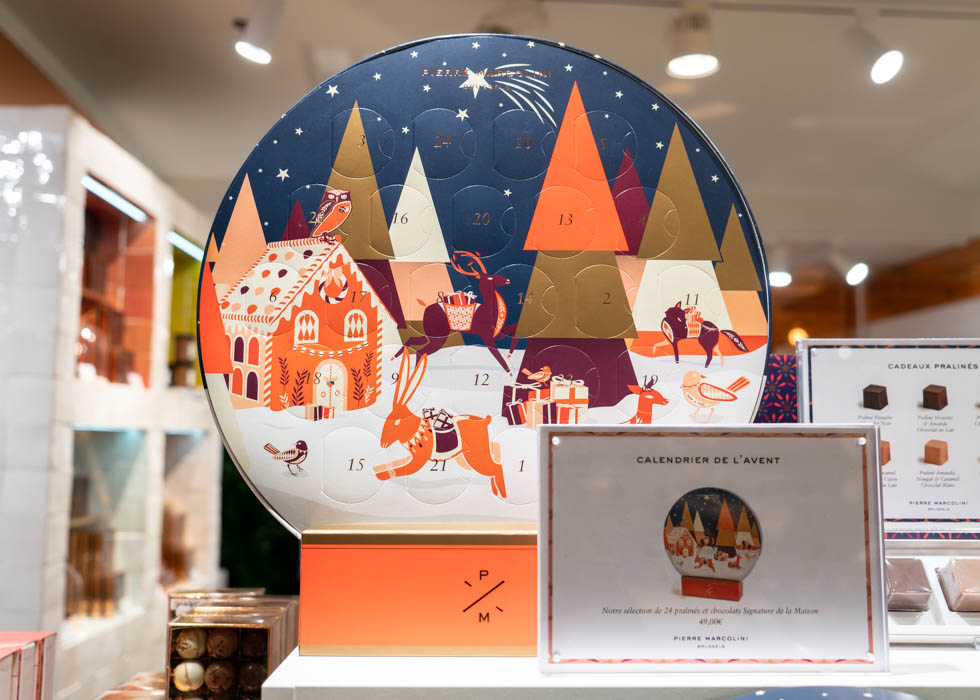
One of the most exciting ways to wait for Christmas day is the Advent Calendar. It is a special calendar used to countdown to 25th December; the celebration of the birth of Jesus. Usually, it has 24 or 25 small doors to open each day, and small gifts are hidden in it. This tradition first began in Germany in the 19th century, then it spread all over the world. In France, the Advent Calendar is sold from mid-October in supermarkets or department stores, and it tells people the arrival of the fabulous Christmas season. It comes in many shapes and forms and can contain various goods such as chocolate, candy, cosmetics, tea, wine, beer, cheese, or even French gourmet like foie gras! About the sweets calendar, famous pastries or chocolate shops sell Advent Calendar which is changed every year; definitely a must-check for sweets lovers. Pierre Hermé, Lenôtre, Sébastien Gaudard all offer beautiful pieces to chose from. Find your favorite one!
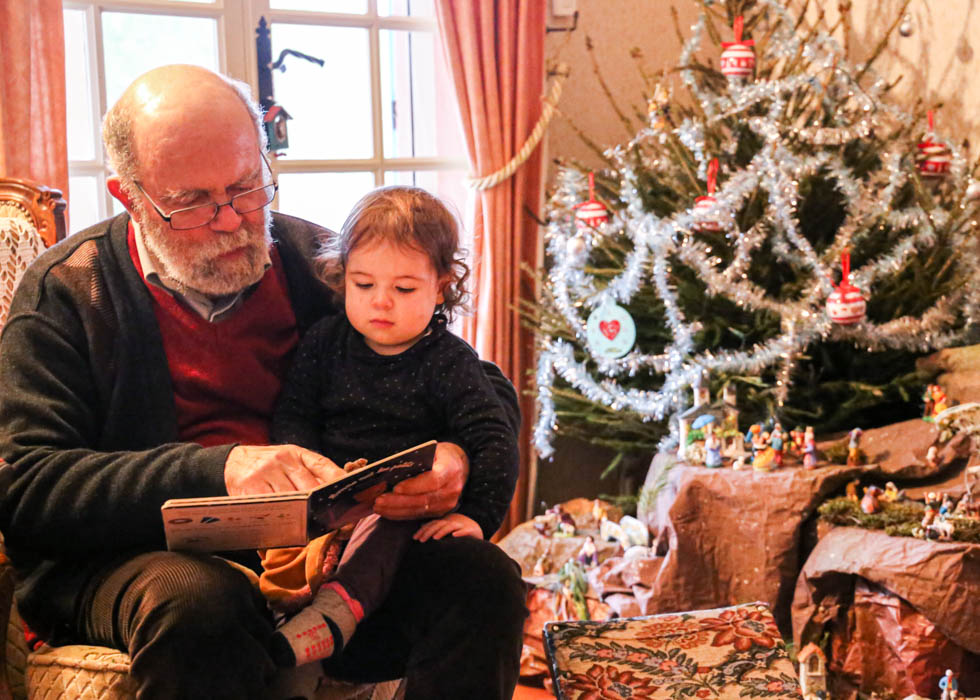
Home decoration is essential for Christmas. In France, Christmas trees are not fake but real! Many French people buy a real fir tree at flower shops, markets, or supermarkets, so these shops will be filled with plenty of fir trees of various sizes from late-November. The reason why we use fir trees is that it’s always green even during winter, and it represents eternal life. When the fresh green scent of Christmas trees smells everywhere in town, it makes people happy and relaxed.
Once the tree comes into a house, it is decoration time. In France, classical and cute ornaments are preferred over modern design. If you want to get a unique ornament, you should go to Christmas markets. There are decorations of traditional motifs like angels, bells, stars, Shepherd's canes, socks, which are made by artisans. Let’s decorate an “immortal” tree with saint motifs while wishing peace upon your loved ones. They are perfect for a merry French Christmas.
Besides Christmas trees, French people sometimes decorate a green holy with red berries on a table or in a house. However, the wreath is not very popular in France.
During Christmas time, it’s frequent to display “Nativity Scenes”, a.k.a "Crèche", in Churches, made of big statues representing the birth of Jesus (celebrated on Christmas day, December 25th). In December, French people display the "crèche" in miniature size at their own home. Santons are figurines that decorate it. This tradition was born in the south of France at the end of the 18th century. Initially, it was just in Provence, but it has grown throughout France. The real scene of Jesus’s advent was in Palestine, but Santons wear Provence’s traditional costume. Small santon figurines in colorful costumes are all cute! In the "crèche", the santon representing baby Jesus is added on 24th at midnight: it symbolizes his birth. On the 6th January, 3 figurines of Magis are added for Epiphany day. Usually, the crèche is displayed in the houses until mid-January. If you want to know more about Santons, check the dedicated article from here.
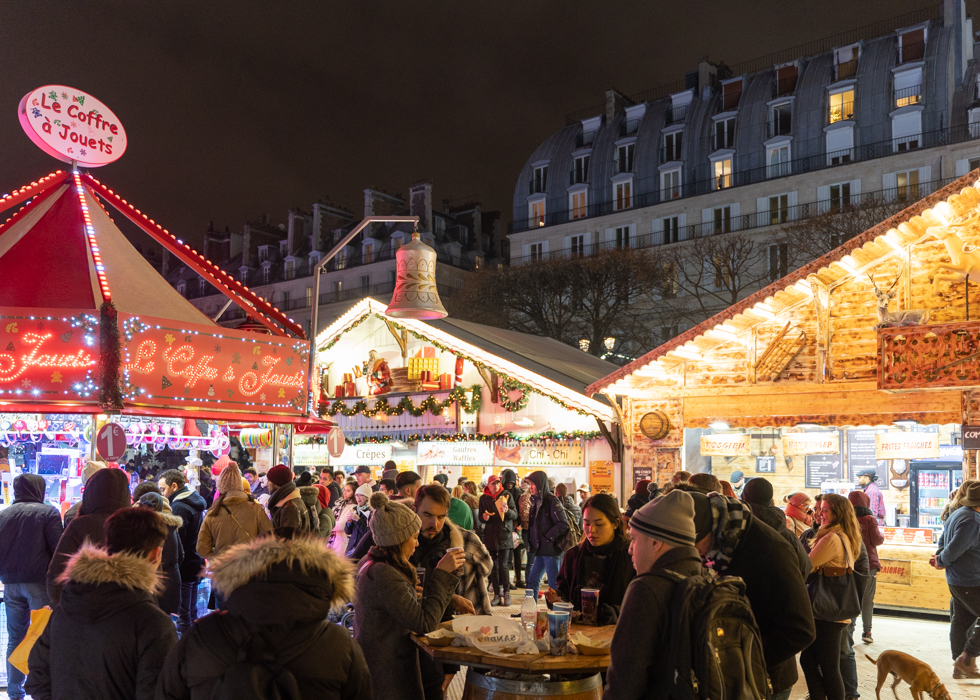
The Christmas market (Marché de Noël) is the best spot to stop by during the season. Drinking spiced hot wine or hot chocolate, eating melting raclette or freshly fried churros, everything in the Christmas market is magical and must-try. The most popular Christmas market in France is the one in Strasbourg. As the city is called the “capital of Christmas”, it is just like a wonderland. It is a place where you should visit once in a lifetime! Besides the Alsace region, Lyon’s market is also charming, and Tuileries Garden or La Défence are the ones we recommend in Paris. Have a stroll in a warm festive mood with your family and find original artisanal Christmas gifts that you cannot find anywhere else.
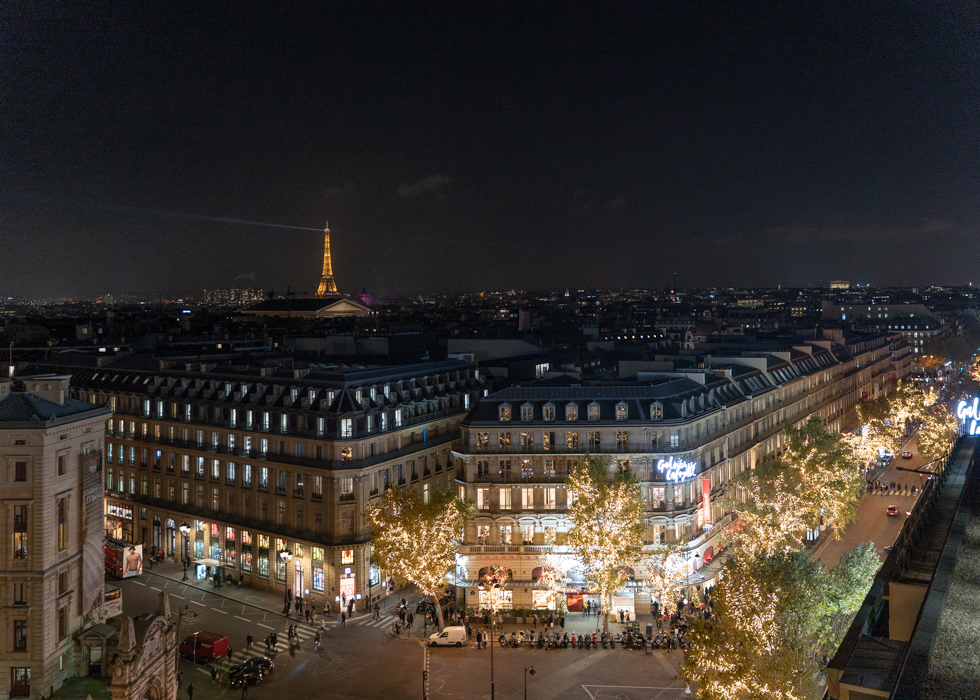
Do not forget about the dazzling view of the town! The gorgeous lights, animated show windows, huge delightful Christmas trees in department stores are all the main events of Christmas. From mid-November, the town starts sparkling in France, and it lasts until the beginning of January (The ending date varies by the location). Every year French people are willing to go watch stunning illumination in town and take some pictures. Paris’ main Christmas tree is in Galeries Lafayette. Its concept changes every year, and it surprises us every time!
Speaking of illumination, the most popular one in Paris is on the Avenue des Champs Elysées. In 2020, it’s complicated to travel to Paris from Asia. However, there is good news for you! Champs Elysées Avenue will hold an online virtual light show, which means everyone can participate in Parisian Christmas from everywhere without a border. It starts from 22nd November, and it will lighten up every day from 17:00 until 02:00 France time. Check it out from here. Have fun this Christmas with the magical charm of special Paris!
Until Christmas Day, the French town was in a magnificent festive mood, but it changes a lot on the day. On the 24th, all shops close earlier than usual, and French people go back home. Then the next day, the town becomes completely calm as if it is enchanted or a silent movie. Let’s see what happens in these 2 days below!
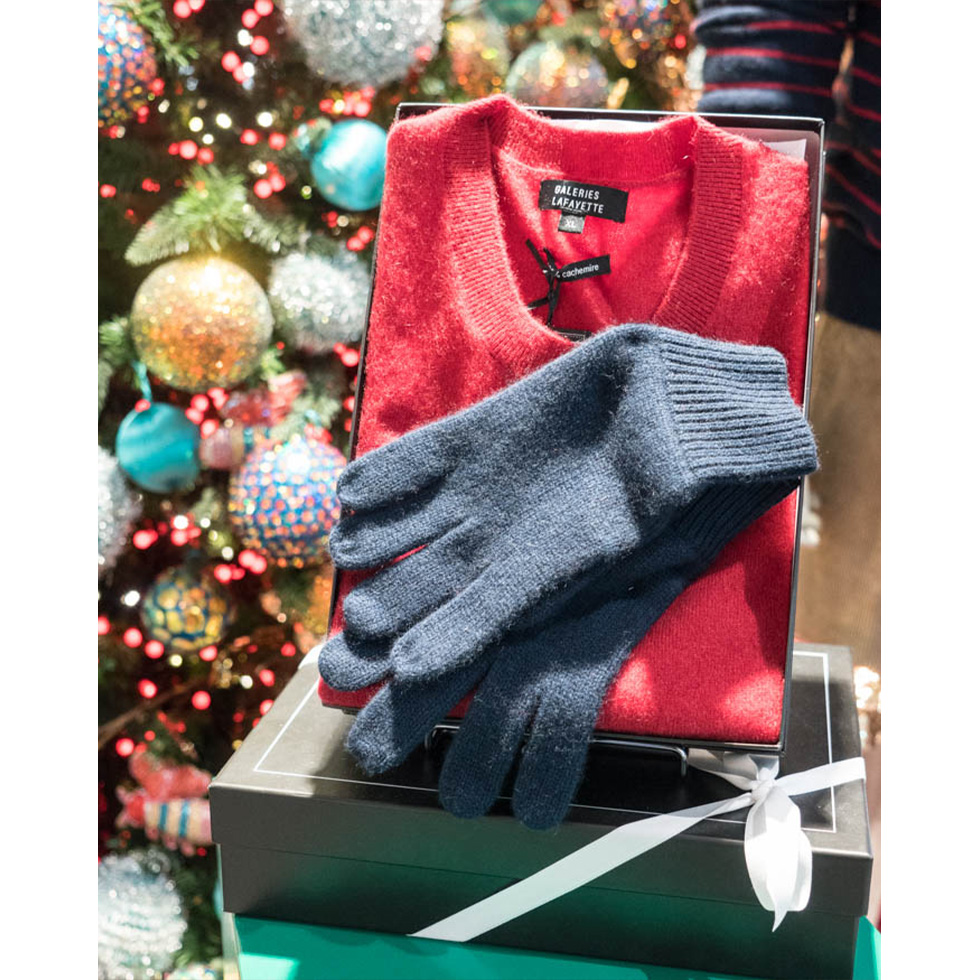
One of the most characteristic points of French Christmas is a big mountain of Christmas presents! In France, people offer gifts to all members of their family from kids to grandparents. French people put their gifts under the Christmas tree. First, they put slippers or shoes of all family members under the tree. After children fall asleep on the night of the 24th, adults leave presents next to the receiver’s shoes, so that they can see which gift is whose. Then, the next morning everyone starts to open their gift. It is heartful that all of them exchange presents as a sign of appreciation. Why not offer presents to every single family member to thank them for this Christmas? It would be the most heartwarming Christmas.
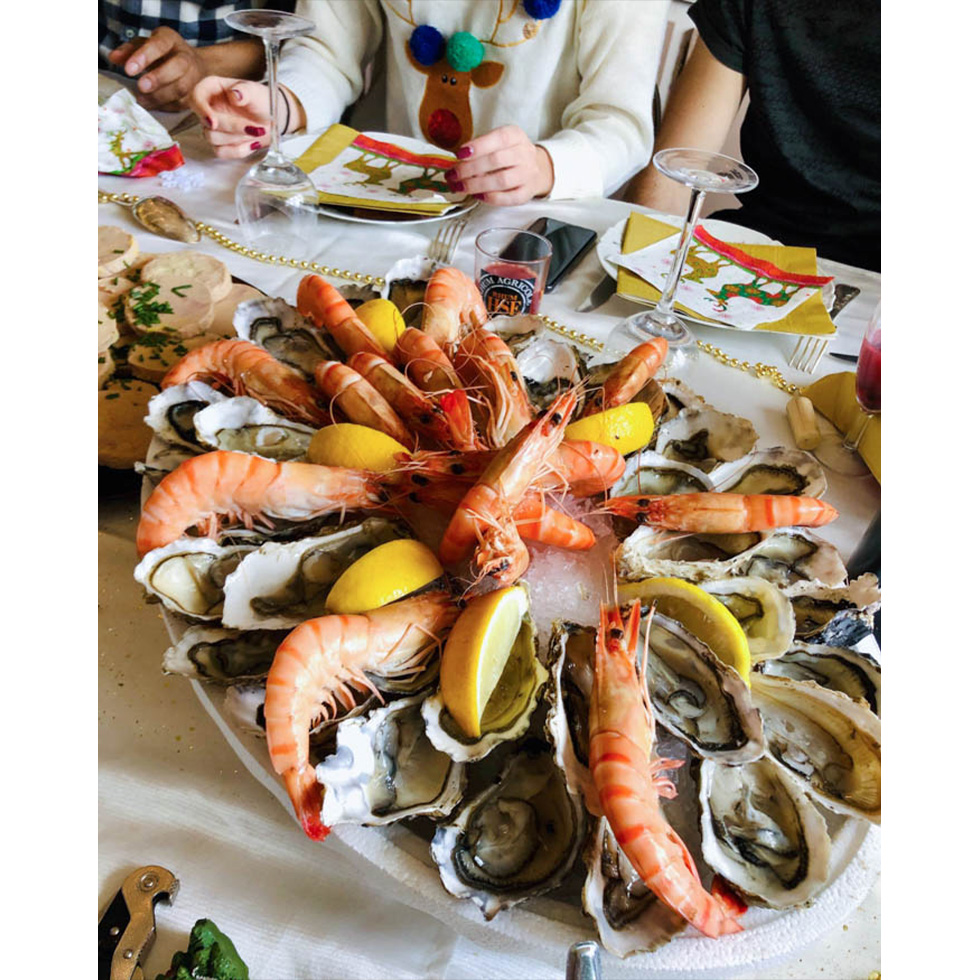
French Christmas habit is changing over time, but there are traditionally 2 special meals for Christmas. The first one is called “Réveillon (eve in French)” which is the diner of the 24th. It is a “simple” dinner without meat. They generally have vegetarian food or seafood such as oyster, gambas, lobster, and so on. In Provence, people have the ritual of 13 desserts which symbolizes 12 apostles and Jesus. There is the traditional bread in olive oil flavored with citrus zest called "oil pump", local confectionery and pastries (such as the famous calissons of Aix), nougat, candied fruits, fresh and dried fruits (raisins, almonds, figs, hazelnuts). on the evening of the 24th people eat a small piece of 13 different desserts, to get good luck.
The second one is the gorgeous full course menu on the 25th. It starts, of course, from a long apéritif time, then foie gras for starter, Turkey with maroon for the main course. For sure, there is a special dessert as the finale of the French Christmas meal. Check it below!
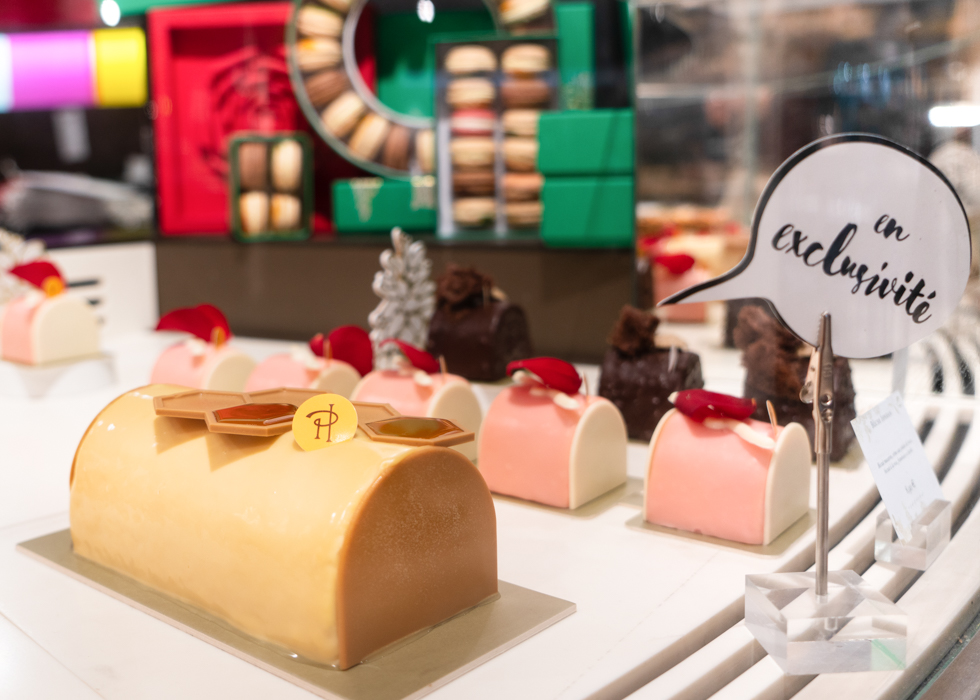
Voilà! French Christmas cake is bûche de Noël (Christmas log in French). As its name implies, the cake represents a log. It’s basically a roll cake covered with cream, but the design and ingredients vary by each pastry. The history of bûche de Noël is much longer than the Christmas tree or crèche (Nativity scene display at home), it dates back to the Middle Age. Perhaps, it was originally a real piece of wood! In some French-speaking countries in Europe, there were various customs featuring a piece of wood. One of the origins was a big fruit log to burn in the fireplace. People chose a large stump so that it continues to warm the house from 24th December to 1st January. Some say it was a homage to the sun during the dark winter days.
Today, the dessert is very creative and various such as made of mousse, ice cream, and so on. They are all too beautiful to eat! The bûche de Noël will make a place where families gather and smile just like a warm modern fireplace.
.jpg)
The most monumental moment of French Christmas is special masses and concerts held in churches on the night of 24th December and. French people who want to celebrate Christmas traditionally, go to church on the night of the 24th. The schedule is different in each church. Find the schedule of Parisian churches from here. The atmosphere of the midnight Mass is very solemn and purely impressive. It is a perfect occasion to appreciate the year and would be an unforgettable experience.
If you are in France this Christmas and plan to go participate in the Christmas Mass, there is a point to be careful about. Because the Mass lasts 1 - 2 hours in a church that the temperature is cold, be sure to wear very warm clothes with gloves, boots, and so on.
Furthermore, in some churches, there will be a live Nativity scene play. It’s good to know the story. On the internet, you can watch the French people’s play. If you are interested, you can find it on youtube by typing "crèche vivant".
After the calm Christmas days, the New Year comes. In contrast to Christmas, New Year’s day is a lively festival! Christmas illuminations are still shining in the town and the tradition still continues until the 6th January. Basically, shops close earlier on 31st December, and they are closed on 1st January. But French people celebrate the new year in a different way.
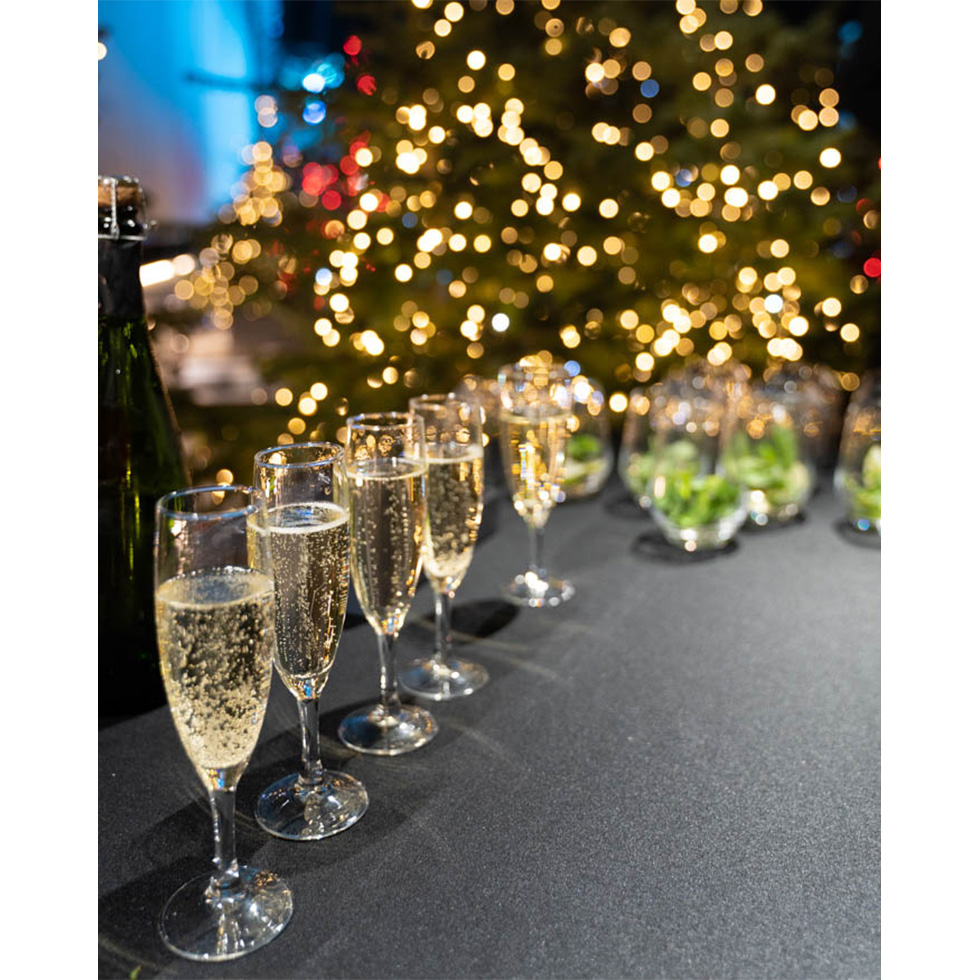
New year’s eve is called “réveillon du Nouvel An (New Years’ eve)” or “réveillon de la Saint Sylvestre”, and it is also an important event in France. But the atmosphere is completely different from Christmas. For New Year’s eve, French people usually hold a home party again with friends. It’s not a solemn event but an exciting one. French people usually invite friends, have a gorgeous meal from aperitif to dessert. The menu is quite similar to the one for Christmas. Then, they dance all night long while drinking champagne. At midnight, people say “Bonne année (Happy new year)”, and kiss each other, call their family, or send messages to wish a happy new year.
The interesting culture is mistletoe. You may have seen it in films. In France, people attach a mistletoe to the chandelier, and they kiss their loved ones under the mistletoe at midnight. It is a very ancient tradition of Celtic origin. The mistletoe symbolizes immortality for the same reason as the Christmas tree(it is always green). So it is said it has virtues, cure diseases, bring fertility and happiness. Today, it is customary that we kiss under the mistletoe at the stroke of midnight in order to bring good luck and be happy in love.
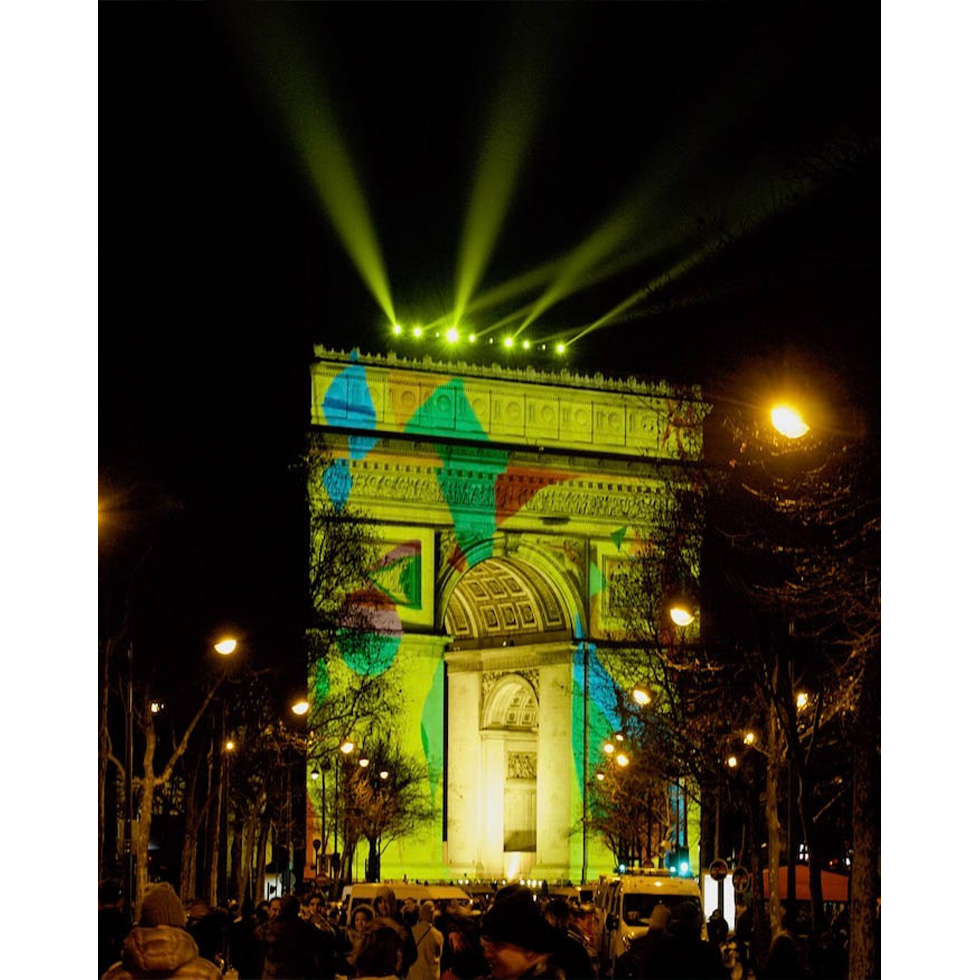
Throughout France, there are many countdown events. The most famous one is at the Champs Elysées. The street will be reserved for pedestrians, and people count down while watching beautiful projection mapping on the Arc de Triomphe. The event starts at about 40min before midnight with a dynamic light-up show, but to get a good place, you should arrive there 2 hours in advance.
Since a lot of people gather there, it’s hard to find a good spot, go to the restroom, and go home. Be aware of your security, especially pickpockets!
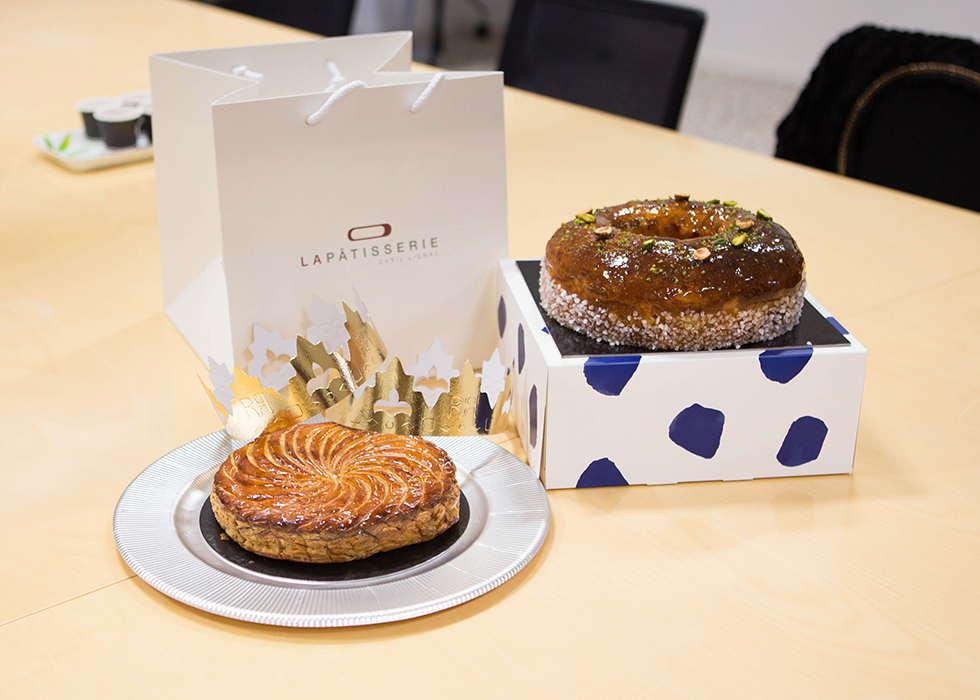
The Epiphany commemorates the visit of the three wise men who came to Bethlehem by following the shining star seen in the sky on the day of Jesus' birth. Their journey lasted 12 days before they saw the baby Jesus and offered him gifts (that’s why Epiphany is 12 days after Christmas). In order to represent this scene, there is a tradition to add 3 Santon figurines of wise men in the crèche (Nativity scene display) on 6th January in their house.
Another tradition for the Epiphany is to share “galette des Rois (Kings’ cake in French)” with your friends or family. It is composed of a puff pastry cake with frangipane paste (made of almond, butter, egg, and sugar) inside, and a small charm, called “fève” in French, is hidden in it. The one who finds the charm wears a paper crown as the King/Queen. However, the origin of this tradition is not related to Christianity. Its history dates back to the Romain era. The Romans celebrated the Saturnalia, feasts of the winter solstice, which consisted of designating the king or queen for a day, by using a bean hidden in a cake. Every year, the French pastry shops offer exclusive creations for the tradition. The taste, shape, design of charm are very varied by each shop. The tradition is spread in Asian countries as well, so it's easy to try this joyful experience in your country.
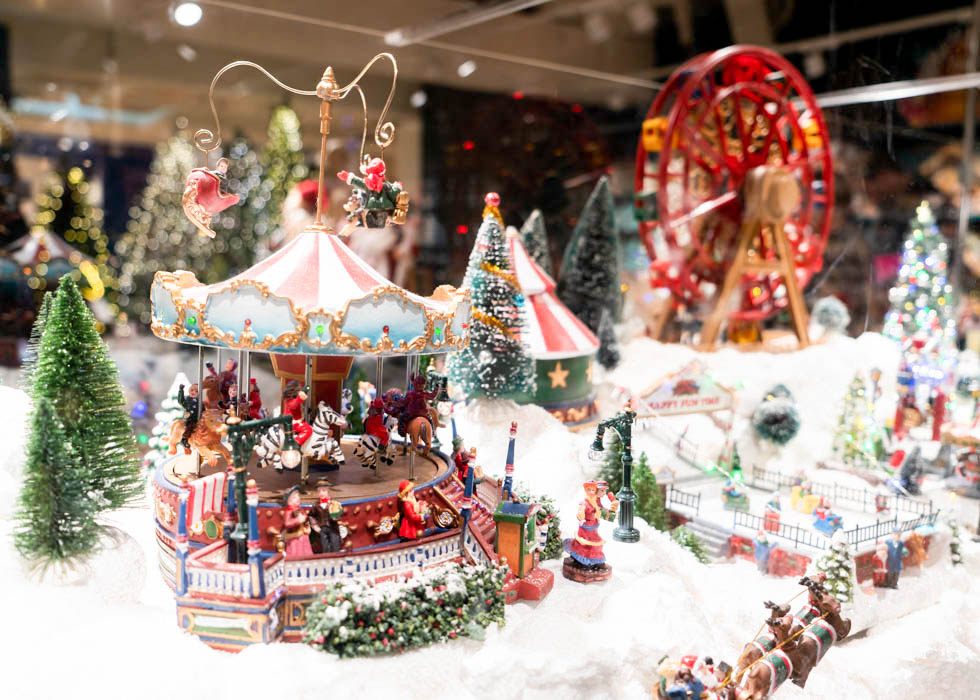
Even if we cannot travel abroad for this Christmas, these traditions could make you feel the real French Christmas spirit. Let's have an imaginary trip to France from your country. O'bon Paris team wish you a Merry Christmas and a happy new year. Joyeux Noël et Bonne Année!
Author & Photographs - O'bon Paris team